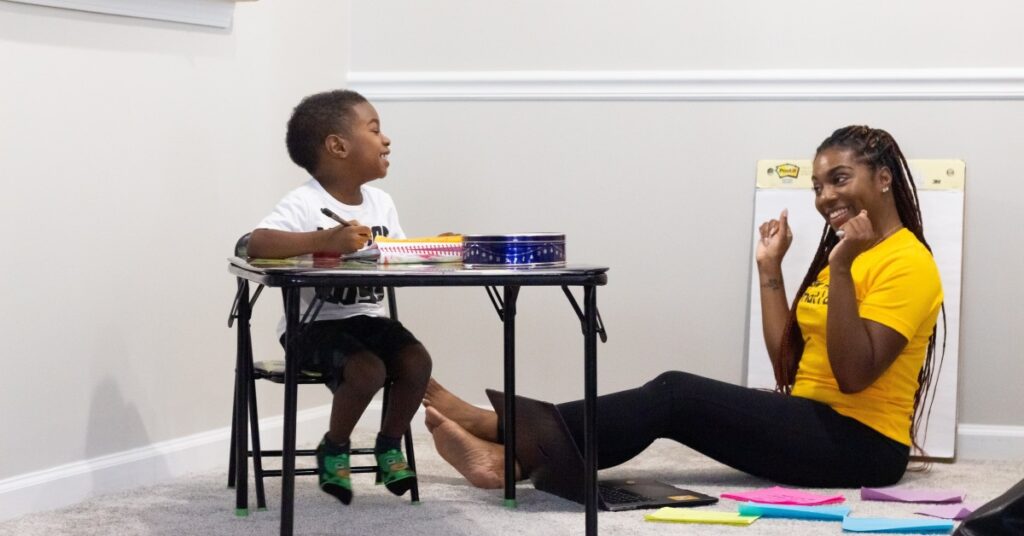
What Is a Master of Library and Information Science?
all LIS professionals must be information-literate. They can work in [...]
This finding holds true even when health, socioeconomic status, and classroom characteristics are accounted for.
So says a recent article published in the American Educational Research Association Journal.
The two Vanderbilt University–affiliated co-authors, an education professor and a doctoral candidate, analyzed data from more than 10,000 elementary school students in an effort to determine the role that teacher recommendations — the most common means by which students are assigned to gifted classes — play in black students’ enrollment in such programs. They found that when a given student and teacher were both black, the student was three times more likely to be recommended for a gifted reading program. The two researchers found no such relationships between teacher and student race and recommendations for gifted programs among Latin@, Asian American, or white students. Their findings showed, moreover, that black students are overall referred to gifted programs at significantly lower rates than their non-black peers by non-black teachers — a pattern that raises concern for a number of reasons, not least of which is the relatively low occurrence of black student assignments to classes taught by black educators.
While black students are disproportionately underrepresented in gifted classes, research suggests that black and Latin@ students are disproportionately overrepresented in special education programs. Research demonstrating this pattern has been consistent for two decades (despite one study suggesting otherwise).
And the disparities don’t end with tracking. Black and Latin@ students, on the whole, are also punished more harshly than white students — with suspensions and even expulsions — for exhibiting the very same behaviors. And they’re pulled out of the classroom more frequently than their white peers, as well, a trend that scholars suggest weakens the teacher-student bond.
Why is it that students of color are not given the same learning opportunities as white students? Why is it that when it comes to common misbehavior, black students in particular are judged more harshly?
One common finding among scholars who have studied students of color is that teachers tend to adjust their perspectives based on students’ backgrounds. When working with students of color and those from low-income families, for instance, teachers are more likely to adopt a deficit perspective than an asset-based (or strengths-based) approach. While an asset-based approach capitalizes on and enhances the positive qualities that students do possess, a deficit perspective causes instructors to view their role as filling gaps in students’ knowledge and skills. By contrast, when teachers have white and/or middle-income students, they rate students’ potential much higher, focusing on students’ skills rather than their deficits.
Lisa Delpit’s famous book, “Other People’s Children: Cultural Conflict in the Classroom,” suggests that many students of color struggle in schools because they are not a part of the culture of power, which she defines as “a system of societal norms and overt or subdued behavior that produces a class of individuals that maintain control and a degree of measured success in the world in which we live.” Norms are shaped around white students, who are often presumed to be well-intentioned and thus given the benefit of the doubt. Students of color are not similarly afforded such presumptions.
When, as a result, students of color are lacking in access to or information about unspoken-but-assumed cultural norms, they’ll violate the norms without meaning to — and then they’ll be viewed negatively by those in charge. Delpit and other scholars point out that this type of cultural exclusion happens most often when there is a misalignment between the cultural backgrounds of students and teachers. Such cultural dyssynchrony makes it difficult for students of color to participate meaningfully in their learning; they may not feel welcomed, respected, or understood by their teachers.
The short- and long-term consequences of discriminatory academic experiences are vast. In the short term, students are likely to disengage completely from their learning. This theory is borne out by practice: Black and Hispanic students are more likely to drop out of school than their white peers. The socioemotional consequences are equally troubling. Research on the concept of stereotype threat suggests that marginalized students internalize the low academic expectations their teachers have of them. This also helps to explain why so few young women succeed in STEM classes, and why boys’ interest in reading tends to wane by sixth grade.
In the long term, there are vast differences between racial groups — both in their college enrollment rates and in the quality of colleges in which they enroll. A 2013 study from Georgetown University, “Separate and Unequal,” found that 82 percent of white freshmen between 1995 and 2009 enrolled at one of the top 468 most selective four-year colleges, as compared to 13 percent of Latin@ students and nine percent of African American students.
Even when students of color and white students enroll in academically similar universities, their graduation rates are very different. Fifty-one percent of Latin@ students and 49 percent of African American students drop out of college (as compared to 30 percent of white students). These differences have long-lasting effects; college enrollment and graduation both help determine the types of jobs that individuals can get, not to mention their future earnings. People of color hold just 26 percent of managerial positions in the U.S., but constitute 46 percent of service workers. Such occupational stratification has led to an economy in which white people are about eight times wealthier than Americans from a Latin@ background and 13 times wealthier than African Americans.
While the problems of social and income inequality cannot be solved solely within the walls of public schools, there are things that can be done to ensure all students have access to a quality education.
A first step toward minimizing cultural dyssynchrony would be to recruit a more diverse teacher workforce. At present, students of color represent nearly half of all public school students, but 82 percent of their teachers are white. Promising recruiting efforts have created a pipeline of teachers from high school through graduate school, with the requirement that in exchange for scholarships, educators will teach in their community schools for at least two years. This helps to ensure culturally relevant teaching that has a chance of connecting students’ lessons with their lives.
But this move toward culturally responsive pedagogy should happen in teacher preparation programs, too. Before they begin to head up classrooms of their own, educators should take courses on multicultural education. This grounding would provide teachers with the theoretical knowledge they need to understand how cultural issues emerge subtly in the classroom. It would help them develop the skills necessary to teach all students effectively, not just those with backgrounds similar to their own.
More important than this theoretical background is actual experience. Teacher candidates should have to spend at least a portion of their practicum experiences in schools that are culturally and linguistically diverse. It is unfair to expect individuals to know how to relate to a wide range of students when they’ve never been asked — or trained — to do so.
Finally, school curricula need to be redesigned to be more inclusive. Each state creates its own curriculum (as a result, nationwide implementation of such a plan is nearly impossible), but students should be able to see people like themselves represented in textbooks and other learning materials. It’s not a stretch to think that the more welcomed and included everyone feels, the more likely students are to be engaged — and the less likely they are to be disruptive. Further, when students can connect in-school learning to their out-of-school lives, education becomes personally relevant and intellectually meaningful.
All children, regardless of their demographic characteristics, deserve every possible opportunity to enhance their education. And no student should be punished for misbehavior by being removed from a learning environment. This becomes even more problematic when the same group of students is consistently denied chances to enrich their learning while simultaneously being suspended or expelled from school. As of the beginning of 2014, more than half of public school students identified as black, Hispanic, American Indian, biracial, or multiracial. It is imperative that we figure out how to provide an appropriate and equitable education for the tens of millions of students of color who deserve it.
Questions or feedback? Email editor@noodle.com

all LIS professionals must be information-literate. They can work in [...]

Elective courses can customize your MLIS degree to a career [...]

Do you intend to work in your community's public library [...]

For decades now, libraries have been attuned to new developments [...]

A more diverse teacher workforce could provide a key to [...]
Categorized as: Special Education, Education & Teaching